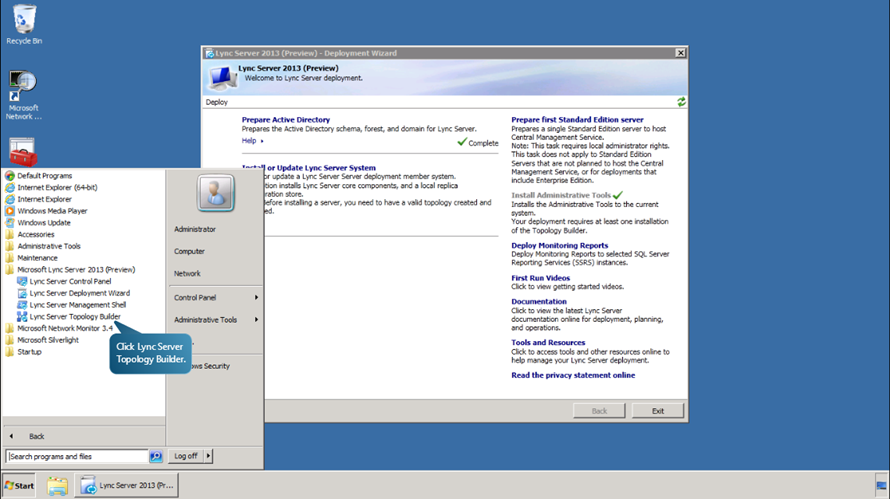

- #Microsoft lync 2013 setup guide how to
- #Microsoft lync 2013 setup guide update
- #Microsoft lync 2013 setup guide download
On the TMG Server, open the Management Console and open the properties of the Lync Services rule that was created in the previous step. Now that the basic rule is created it can be changed to redirect to the Lync port, i.e. #Microsoft lync 2013 setup guide update
Now finish the wizard and click Apply in the details pane to save the changes and update the configuration. On the Authentication Delegation page, select No delegation, but client may authenticate directly. On the Authentication Settings page, select No Authentication. Besides the FQDN it also needs and configured in the Subject Alternative Names field. Again, follow the wizard and assign a certificate. On the Web Listener IP Address page, select External, and then click Select IP Addresses. On Select Web Listener page, click New to open the New Web Listener Definition Wizard. On the Public Name Details page, confirm that This domain name is selected under Accept Requests for, type the external Web Services FQDN, in the Public Name box. On the Internal Publishing Details page, in the Path (optional) box, type /* as the path of the folder to be published. This is the Front-End pool, or the Front-End server (in case of Standard deployment) On the Internal Publishing Details page, type the fully qualified domain name (FQDN) of the internal web farm that hosts your meeting content and Address Book content in the Internal Site name box. On the Server Connection Security page, select Use SSL to connect to the published Web server or server farm. Follow the wizard, set the rule to Allow and select Publish a single Web site or load balancer. On the TMG Server, start the Management Console and create a new Web Site Publishing Rule:. To configure a Web Publishing Rule in TMG2010 use the following steps: This should also be configured in the TMG rule later on. As you can see in the picture above, the web service is listening on port 4443 and published on port 443. So, the FQDN will point to the TMG Server, while the will point to the Lync 2013 Edge Server. The FQDN for this server is defined in the External Web Services FQDN in the Topology Builder: The TMG Server is a different server with a different external IP address. This Edge Server is also used for federation services with other partners. In our environment, the external Lync clients connect directly to the Lync Edge Server. Enabling external devices to connect to Device Update web service and obtain updates. Accessing the Location Information service. Accessing the Dial-in Conferencing Settings webpage. Accessing the Microsoft Lync Web App client. #Microsoft lync 2013 setup guide download
Enabling remote users to download files from the Address Book service. Enabling external users to expand distribution groups. Enabling external users to download meeting content for your meetings. .jpg)

You also might want to implement publishing rules on your Threat Management Server (TMG) 2010 to implement the following additional services: This way you can use Lync 2013 internally and externally, including federation with other Lync 2010/2013 or OCS 2007 R2 organizations.
#Microsoft lync 2013 setup guide how to
In an earlier blog post I explained how to setup a Lync 2013 environment with a Front-End server and an Edge Server.



.jpg)



 0 kommentar(er)
0 kommentar(er)
